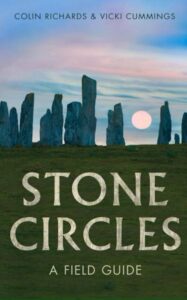 By the time the sun rose on the morning of 21 December 2024 upon the late Neolithic stone circle in Wiltshire, England now commonly referred to as Stonehenge, four and a half thousand people were gathered around it to observe and celebrate the Winter Solstice. Another 100,000 viewed the sunrise upon the monument via a live feed on the Internet. Some of the other stone circles throughout the British Isles also saw gatherings being held on this same morning. What is it about these ancient creations that continues to draw people to them more than three millennia after their original construction? And for that matter, what actually were they and how many of them are there?
By the time the sun rose on the morning of 21 December 2024 upon the late Neolithic stone circle in Wiltshire, England now commonly referred to as Stonehenge, four and a half thousand people were gathered around it to observe and celebrate the Winter Solstice. Another 100,000 viewed the sunrise upon the monument via a live feed on the Internet. Some of the other stone circles throughout the British Isles also saw gatherings being held on this same morning. What is it about these ancient creations that continues to draw people to them more than three millennia after their original construction? And for that matter, what actually were they and how many of them are there?
In their recently published book Stone Circles; A Field Guide, Prof. Colin Richards and Prof. Vicki Cummings present an extensively researched, very detailed, highly informative presentation of 344 stone circle sites across England, Scotland, Wales, Northern Ireland, Isle of Man, and the Republic of Ireland. Well-illustrated with colour photographs, black and while illustrations, and detailed maps, Stone Circles includes profiles of each site that present the current understanding of its structure, history, and possible use or uses.
Introducing the book as a whole is a brief but very informative introduction to ancient stone circles that covers topics such as the landscapes upon which they are found, geology of the sites and the stones used, and the archeological aspects of studying such circles. Also, for those who truly wish to put this field guide to use in the field, included with each stone circle profile are practical instructions on how to reach them.
As one who was truly in awe of Stonehenge the first time I visited it, I was astonished to learn how many other circles were known across the British Isles, and how many could still be seen by all who were sufficiently curious about them and motivated to do so. Yet even if field explorations are not within your interest or capacity, despite its identification as a field guide, Stone Circles is decidedly worthy as also acting as an armchair portal into many an adventure back into the distance past of ancient Britain.
If you enjoyed reading this, please consider signing up for The Well-read Naturalist's newsletter. You'll receive a helpful list of recently published reviews, short essays, and notes about books in your e-mail inbox once each fortnight.
